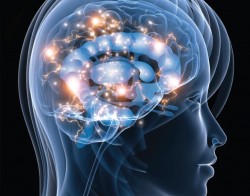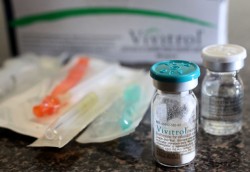According to the National Library of Medicine, “When used carefully and under a health care provider’s direct care, [prescription narcotics] can be effective at reducing pain.” This is the main reason they are prescribed to many individuals around the world. However, it can be daunting to begin a narcotic treatment regimen, as we know these drugs can be habit-forming and even addictive under certain circumstances.
Taking Your Prescription the Right Way

Always take your prescription as directed and let your doctor know if you’re experiencing any odd side effects.
The main thing to remember is there is no reason you should become addicted to your narcotic prescription if you take the drugs as directed. Here are some general rules to follow to ensure that you are taking your prescription safely and exactly as you are meant to:
- Always listen to your doctor. They “may suggest that you take your medicine only when you feel pain” or “on a regular schedule.” It is important to always stick to the amount prescribed by your physician and not to deviate from that even if you want to.
- Never take the medication more often, in a higher dose, or through a different method than you were prescribed to do so. This sort of behavior, though it may not seem harmful at first, is actually considered abuse and engaging in it little by little can cause you to eventually become addicted to your prescription.
- If you experience any strange side effects or symptoms that do not go away while taking the drug, make sure to talk to your doctor immediately.
- In general, you should not use a narcotic for more than 3 or 4 months unless you have been specifically told to by your physician and you are currently still under their care.
If you follow these rules, you will be very unlikely to become addicted to your prescription. Remember, many individuals take prescription opioids safely and without incident, and as long as you are careful and diligent with your doses, you can too.
Dependence vs. Addiction
Many people become concerned that they are addicted to their prescription after they have been taking it for a while and begin to experience withdrawal symptoms. Dependence, though, is not the same as addiction. As stated by the National Institute on Drug Abuse, “Physical dependence can happen with the chronic use of many drugs––including many prescription drugs, even if taken as instructed,” and experiencing withdrawal symptoms and other signs of physical dependence does not necessarily mean you are addicted.
If you take your narcotic prescription as directed and become dependent on the drug, you can slowly be weaned off it safely by your doctor and not require addiction treatment. It is important to keep this in mind, especially if you have never been on a medication like this before.
Will I Become Addicted to My Narcotic Prescription?
As long as you take the medication as directed and keep open communication with your doctor, you should not become addicted to your narcotic medication. If you have more questions about prescription opioids and their effects, call 800-934-1582(Sponsored) today.
The term narcotic is often used to describe any type of drug available, when in truth, it actually covers a very specific type of substance. According to the Drug Enforcement Administration, it refers to drugs that are derived from opium either synthetically or naturally. Because narcotics are all actually very similar substances that, in one way or another, come from the same point of origin, they often require the same type of treatments for their addiction syndromes under most circumstances.
Evidence-based Approaches
As stated by the National Institute on Drug Abuse, “Several options are available for effectively treating prescription opioid addiction.” These options are based on large amounts of medical evidence and research that has proven them to be particularly effective for the treatment of prescription opioid/narcotic addiction. However, the same approaches have been found effective for treating the abuse of illegal opioids as well, such as heroin and opium.
The most commonly used treatment options for narcotic addiction include:
- Medications: naltrexone, methadone, and buprenorphine
- Behavioral therapies: cognitive-behavioral therapy, contingency management, family therapy, group therapy
- Support groups: Narcotics Anonymous, SMART Recovery
All of these options can be used in the treatment of any narcotic addiction, but whether or not they are the most beneficial and effective choice depends on the individual, their needs (both those related to their addictions and those unrelated), and the severity of their condition. For example, some individuals may choose to attend rehab in a center that does not utilize pharmacological methods but instead provides therapy and possibly holistic options to patients. Others may prefer the freedom and flexibility of a support group but may still visit an outpatient clinic to receive medication.
Depending on your needs, you may utilize one or more of these options as part of your treatment, but these are all possible choices for narcotic addiction recovery.
Why Don’t Different Narcotics Require Different Treatments?
Some of the medications or therapies listed above may better suit someone addicted to a prescription or an illegal opioid specifically, but for the most part, a particular patient’s needs and preferences will help decide which treatment(s) they should use. Different types of opioids do not require different methods from these listed above for the most part because they all cause similar effects.
Narcotics all come from an opioid basis, whether they are naturally occurring drugs like codeine, opium, and morphine or synthetic substances like heroin and oxycodone. Considerable research has been done on these types of drugs, and the options above have all been found to be effective for opioids because they all have the same general effects. Usually, between two people who have both been narcotic abusers, the only reason their treatment regimens will be different is because they have different needs. Still, all the options listed above can be used to treat any type of narcotic addiction syndrome.
How Do I Find Narcotic Addiction Help?
If you have been struggling with opioid abuse and would like to find a rehab center or another type of treatment option in your area, call 800-934-1582(Sponsored) today.
While no one starts using opiates with the intention of abusing these drugs or becoming addicted, opiate effects take on a life of their own inside the brain’s chemical system. For people who’ve abused opiates for months at a time, the risk of opiate overdose increases with each passing day.
Opiate overdose risks develop out of the cumulative damage these drugs cause within the brain’s chemical pathways. Long-term abuse practices inevitably open a person up to the addictive potential of the drug. It’s at this point where opiate overdose risks become most pronounced. In the absence of needed treatment help, addicts essentially play a game of Russian Roulette with their lives each time they use the drug.
The Makings of an Opiate Overdose Episode
Brain Interactions
As the most effective pain-relieving agents ever developed, opiate drugs work by slowing nerve signal transmissions throughout the body’s central nervous system. According to the U. S. National Library of Medicine, this mechanism works to block incoming pain signals from reaching the brain.
This slowing effect not only affects nerve signal transmissions, but also the major systems in the body, which includes the respiratory system, the cardiovascular system and the circulatory system. Opiate overdose risks stem from the impact these drugs have on the body’s major systems.
Withdrawal Effects
When used in excess, opiate effects overexert the brain’s chemical-producing processes, placing considerable strain on the cells that secrete neurotransmitter materials. Over time, these cells lose their ability to function normally and start to rely on opiate effects to secrete needed chemical supplies.
In the process, the body starts to develop withdrawal symptoms in response to the brain’s weakening functional capacity. Withdrawal symptoms, such as fatigue, depression, insomnia and restlessness play a pivotal role in prompting continued drug use as users attempt to self-medicate uncomfortable withdrawal effects.
Tolerance Level Increases
One of the things that make opiates so addictive lies in the brain’s ability to tolerate increasing larger amounts of the drug. According to the Journal of Addiction Science & Clinical Practice, tolerance level increases develop in response to the ongoing damage opiates cause to chemical-producing cells in the brain.
With each tolerance level increase, a person must take larger drug doses in order to experience the anticipated “high” effect. This process continues on indefinitely for as long as a person keeps abusing opiates. Overall, the combined effects of withdrawal and increasing tolerance levels create optimal conditions for an opiate overdose event to take shape.
High Risk Scenarios
Opiate overdose risks not only develop during the course of drug abuse, but also become a factor in cases where a person successfully completes detox and relapses shortly thereafter. Under these conditions, opiate overdose risks run exceedingly high as the brain’s tolerance level plummets once a person stops using the drug.
This leaves a person wide open to ingesting toxic amounts of opiates in an attempt to pick where he or she left off in terms of dosage amount. When this happens, users not only risk ending up with severe brain damage, but can also die since the body’s respiratory system can easily shutdown in response to too high a dose.
Treatment Considerations
More often than not, by the time a person reaches a point where opiate overdose risks become a factor, a full-blown addiction has likely taken hold. Once addiction sets in, it’s all but impossible to reduce or control intake amounts, which leaves the door wide open for an opiate overdose event to occur.
If you or someone you know struggles with opiate addiction and have questions about the risks surrounding opiate overdose, please feel free to call our toll-free helpline at 800-934-1582(Sponsored) for more information. Our addictions specialists can also help connect you with treatment programs in your area.
It’s no secret how heroin abuse has swept across the country making for an epidemic of growing proportions with people you’d least expect succumbing to the effects of this deadly drug. According to the National Institute on Drug Abuse, an estimated 23 percent of people who use heroin will become dependent on the drug.
When a loved one enters into heroin abuse practices, it may not be easy to spot the signs early on. As heroin’s effects can easily transform a responsible individual into a compulsive drug-user, spotting signs of heroin abuse early on can save you and your loved one much confusion and heartache down the road.
Heroin’s Background Effects
Heroin, one of the strongest opiate drugs in existence, has a chemical makeup that closely resembles the body’s own endorphin chemicals. When ingested, the brain assimilates heroin into its own chemical system much like it does its own endorphin chemicals.
While this may sound harmless enough, heroin exerts a tremendous strain on the brain’s chemical pathways, forcing the production of large amounts of endorphin chemicals. These interactions not only deplete needed endorphin chemical supplies, but also cause damage to the cells that secrete these chemicals.
These developments set the stage for heroin abuse and eventual addiction to develop. Unless a person starts out using heroin on a frequent basis, it can be difficult to spot signs of heroin abuse at the outset.
Physical Changes
After so many days or weeks of repeated heroin abuse, the drug’s effects start to compromise the brain’s ability to regulate the body’s processes. According to the Mount Sinai Journal of Medicine, chemical imbalances brought on by heroin’s effects eventually make the brain dependent on heroin to function normally.
At this point, a loved will likely start to exhibit withdrawal effects in response to the brain’s need for more of the drug. Withdrawal symptoms to watch out for include:
- Sweating
- Inability to sleep
- Unusually low energy levels
- Tremors in the extremities
- Restlessness
- Irritability
Over time, these symptoms grow worse in severity, which only works to drive continued drug use.
Changes in Behavior
As the brain’s dependence on heroin increases, your loved one’s priorities become more so focused on getting and using the drug. This shift in priorities develops out of the body’s physical dependency, and also the brain’s growing psychological dependency on the drug’s effects.
Once the brain’s state of chemical imbalance reaches a certain point, damage to the brain’s reward system cause a shift in a person’s thinking patterns and overall mental outlook. As this condition progresses, changes in behavior may take on the following forms:
- Missed days at work
- Money problems
- Forgetfulness
- Lying to cover up drug use
- Spending more time alone or away from home
- Relationship conflicts
- Noticeable mood swings
- Getting into trouble with the law
At this point, the beginnings of an addiction have taken shape. If this pattern continues, getting and using heroin will gradually take on top priority in a loved one’s life.
Considerations
Over time, the brain develops a voracious appetite for heroin’s effects leaving a person helpless to control his or her drug-using urges. Without needed treatment help, your loved one’s quality of life will likely enter into a downward spiral of pain and disappointment as the drug’s effects take over.
If you or someone you know suspects a loved one may be engaged in heroin abuse practices and have more questions about the effects of this drug, please don’t hesitate to call our toll-free helpline at 800-934-1582(Sponsored) to speak with one of our addictions counselors.
The stigma attached to heroin abuse has been around for decades. Indeed, heroin addiction exists as one of the most debilitating forms of drug abuse, reducing its victims to shells of who they used to be. Enter prescription pain pill abuse: doctor prescribed with medicinal benefits. Stigmas attached to prescription pain pill addiction carry less of a sting, though their drug effects are pretty much the same; but, which is worse?
Both heroin and prescription pain pills belong to a class of drugs known as opiates. This similarity in and of itself accounts for much of the damage these drugs can cause when used in excess.
Surprisingly, many similarities exist between heroin and prescription pain pills regardless of the “different worlds” from which two substances come. Understanding how opiates work in the brain can help you make the judgement call in terms of which is worse, heroin abuse or prescription pain pill abuse.
Schedule I vs Schedule II Controlled Substances

Prescription pain pills and heroin work within the same area of the brain and produce similar side effects.
Drugs belonging to the Schedule I and Schedule II classes of controlled substances actually share more similarities than differences in terms of how they interact with the brain and body. Heroin falls under the Schedule I classification as an illicit substance. It also carries an extremely high risk of abuse and addiction.
According to the U. S. Drug Enforcement Administration, Schedule II class drugs also carry high abuse and addiction risks, though this group consists of legal substances, all of which require a doctor’s prescription. Perhaps the biggest difference between heroin and prescription pain pills has to do with their manufacturing processes. Whereas prescription pain pills are formulated to produce specific results according to measured amounts, heroin potency levels can vary from batch to batch with some varieties containing dangerous additives.
How Opiates Work on the Brain
Opiates, as a group, produce pain-relieving effects by slowing down chemical processes throughout the brain and central nervous system. Once opiates enter the brain, they stimulate the production of dopamine, norepinephrine and serotonin from key brain cell sites. These chemicals play a central role in regulating pain and pleasure-related sensations as well as movement throughout the central nervous.
In effect, abuse and addiction develop out of the damage done to cell sites over time. The stronger the drug, the more often it’s taken, the faster the rate of abuse and addiction. While prescription pain pills do vary in potency and effects, they all work within the same areas of the brain as heroin, and for the most part, produce the same effects.
Heroin Abuse vs. Prescription Pain Pill Abuse: Which is Worse?
On average, heroin carries a potency level that’s three times that of morphine, with morphine being one of the strongest prescription pain medications on the market. This difference alone makes heroin the more harmful substance.
That being so, newer and stronger varieties of prescription pain pills enter the market every year, a few of which are comparable to heroin in potency level. According to Forbes, Zohydro, one of the newest prescription pain relievers, has a potency that runs from five to 10 times that of Vicodin, which is a brand of morphine. Ultimately, both heroin abuse and prescription pain pill abuse lead down the same dangerous path and make for a seamless transition when switching from one to the other.
If you or someone you know struggles with prescription pain pill or heroin abuse and have further questions about how opiate addiction works, please feel free to call our toll-free helpline at 800-934-1582(Sponsored) to speak with one of our addictions specialists.
Opioids, otherwise known as prescription pain medications, offer effective treatments for relieving most any type of pain symptom. In spite of these treatment benefits, the effects of these drugs disrupt the brain’s chemical system over time when abused or used in excess.
According to the National Institute on Drug Abuse, the effects of opioid abuse on the brain greatly increase the risk of developing depression disorders. With ongoing opioid abuse, symptoms of depression become more so pronounced; however, the effects of these drugs make it increasingly difficult for a person to view opioids as the problem. For these reasons, being able to spot signs of opioid abuse early on gives you a fighting chance at preventing a full-blown depression disorder from taking root.
1. Withdrawal Episode Severity

As the depressive symptoms worsen, one relies more and more on opioids to get through each day.
It doesn’t take very long before opioid abuse practices bring on episodes of withdrawal. Withdrawal episodes come with a range of uncomfortable symptoms, including:
- Restlessness
- Irritability
- Sweating
- Muscle aches
- Bouts of anxiety
- Feelings of depression
The longer a person continues to engage in opioid abuse the more severe these symptoms become. Likewise, depression symptoms worsen in intensity, which, over time, reconfigures the brain’s chemical pathways into a depression-based pattern.
2. Weakening “High” Effects
Opioids work by forcing the production of neurotransmitter chemicals from chemical-producing brain cells. These interactions inevitably cause damage to brain cell structures making them less sensitive to the drug’s effects. This means, the usual drug dose won’t produce the anticipated “high” or “buzz” a person seeks.
These developments prompt users to keep increasing dosage level amounts to compensate for the brain’s weakening response to opioid effects, according to the Substance Abuse & Mental Health Services Administration. Meanwhile, brain cell structures undergo further damage as withdrawal symptoms grow more severe. Under these conditions, the makings for a full-blown depression disorder are well underway.
3. Loss of Interest/Motivation in Daily Life
With continued opioid abuse, a person gradually loses interest in activities and pursuits he or she once enjoyed due to the brain’s coming to rely on opioid effects as a source of contentment and well-being. Growing feelings of depression only feed into this cycle as users attempt to self-medicate depression-based symptoms with continued drug use. In effect, opioids become a person’s “healing” drug for depression as well as a powerful source of motivation throughout the day.
4. Needing Opioids to Cope with Daily Life
Full-blown depression can be debilitating in terms of the overall sense of helplessness and hopelessness this condition brings. After so many weeks or months of opioid abuse, the drug’s effects become a type of saving grace, helping a person cope with the responsibilities and pressures of the day. At this point, users are dealing with opioid addiction on top of a depression disorder, which entails an even more destructive cycle of opioid abuse behaviors.
When to Consider Treatment
Considering how opioid abuse practices can so easily snowball out of control, the sooner a person looks into getting treatment help the easier it will be to break the drug’s hold over his or her life. Without needed treatment help, ongoing damage to the brain’s chemical system only works to worsen depression symptoms making for a miserable day-to-day existence overall.
If you or someone you know struggles with opioid abuse and have further questions about opioids and depression, please don’t hesitate to call our toll-free helpline at 800-934-1582(Sponsored) to speak with one of our phone counselors.
Codeine, one of the less potent opiate drugs, nonetheless carries the same abuse and addiction potential as oxycodone, morphine and heroin when codeine abuse practices become an everyday indulgence. Like all opiate drugs, codeine influences brain chemical processes in such a way as to alter the brain’s chemical system over time.
Whether using this drug for pain-relief, as a cough suppressant or for recreational purposes, the risk of falling into codeine abuse practices remains. Understanding how this drug impacts brain and body functions can go a long way towards preventing a serious drug problem from taking hold of your life.
The Codeine Abuse Cycle
Codeine’s pain relieving effects start in the brain through the drug’s interactions with individual brain cell sites. Certain brain cells produce neurotransmitter chemicals, such as serotonin, dopamine and norepinephrine, which play central roles in regulating the central nervous system as well as most every major system in the body.
According to Columbia University, this increase in neurotransmitter levels blocks incoming pain signals from reaching the brain, which accounts for the reduction in pain symptoms. Since the brain’s cells have to work extra hard in the process, they inevitably start to develop signs of wear and tear, which ultimately weakens their responsiveness to the drug’s effects.
When this happens, users must take increasing amounts of codeine to experience its pain-relieving and/or “high” effects. In essence, the codeine abuse cycle continues on from here, causing increasing amounts of damage along the way.
Codeine Abuse Risks
Physical Dependency

Muscle aches and pains are a symptom of codeine withdrawal.
The body’s growing dependence on codeine effects becomes one of the very first signs of a developing codeine abuse problem Physical dependency develops out of the damage done to the brain’s chemical-producing cells, leaving them unable to function normally without codeine’s effects.
At this point, the brain can no longer regulate the body’s functions as normal so physical dependency naturally breeds withdrawal symptoms, especially when needed amounts of codeine are lacking. Withdrawal symptoms typically take the form of:
- Muscle aches and pains
- Problems sleeping
- Agitation
- Anxiety
- Restlessness
- Excess sweating
- Feelings of depression
- Mood swings
Addiction
For the most part, the codeine abuse cycle runs all by itself in terms of driving a person to keep taking the drug. When left untreated, this cycle creates the optimal conditions for an addiction problem to take root.
By the time addiction sets in, chemical imbalances have started to impair the brain’s reward system functions, an area that determines a person’s motivations, needs and priorities, according to the National Institute on Drug Abuse. In effect, psychological dependency lies at the heart of addiction as the mind has come to view codeine as a means for coping with daily life. These developments only work to reinforce the codeine abuse cycle by inciting compulsive drug-using behavior.
Overdose Potential
Codeine’s ability to relieve pain symptoms stems from the slowing effects it has on chemical activities throughout the brain and body. This translates into slower heart rates and breathing rates, not to mention all the other systems under the control of the central nervous system.
With a large enough drug dose, codeine can easily shut down the body’s respiratory system at which point a person can no longer breathe. Considering how quickly codeine abuse damages brain cell structures, dosage level increases can happen within a fairly short period of time depending on how often a person uses the drug.
If you or someone you know struggles with a codeine abuse problem and have further questions about the risks associated with codeine use, please feel free to call our toll-free helpline at 800-934-1582(Sponsored) to speak with one of phone counselors.
Recovering from a heroin addiction can be one of the most difficult challenges in a person’s lifetime. For many, the damaging effects of heroin addiction persist long after drug use ends. Vivitrol, one of the newer opiate addiction treatment medications on the market, offers a novel approach for helping addicts overcome the effects of heroin addiction in recovery.
Since heroin addiction affects different people in different ways, what works for one person may not necessarily work for another. Methadone and buprenorphine treatment approaches, for the most part, mimic the effects of opiates. Vivitrol interacts with different chemical processes in the brain while producing similar effects in terms of helping to eliminate the need for heroin. For someone coming off a chronic heroin addiction problem, Vivitrol injections may well provide the type of support needed to maintain abstinence on a long-term basis.
Heroin Addiction’s Effects
Heroin, no doubt, causes considerable damage to the brain and body on a physical level; however, the actual effects of heroin addiction take root inside a person’s thinking and behaviors. According to the Substance Abuse & Mental Health Services Administration, these changes account for why it’s so hard for addicts to maintain abstinence in recovery.
While it may seem like the physical effects of the drug drive the incessant drug cravings experienced in recovery, it’s actually the brain’s psychological dependency on heroin’s effects that make long-term abstinence so hard to come by. In effect, a person reaches a point of believing he or she can’t cope with daily life without heroin.
What Is Vivitrol?

Vivitrol is not opiate-based, thus has no risk of abuse or addiction.
Vivitrol, a brand name for naltrexone, acts as an opioid antagonist that’s formulated to keep heroin and opiate drugs in general from altering chemical processes in the brain. Naltrexone in pill form has been around since 1984, while Vivitrol, the injectable form of naltrexone was only just approved as an opiate addiction treatment in 2010.
Whereas methadone and buprenorphine act as opioid agonists, stimulating brain chemical activities and weaning a person off heroin effects, Vivitrol keeps a person from experiencing the “high” effects of heroin in the event of a relapse episode occur, according to the Journal of Substance Abuse: Research & Treatment.
Benefits of Vivitrol
As an injectable, Vivitrol produces long-term effects so a person only needs to receive an injection on a monthly basis. Considering the compulsive drug-using behaviors that come with heroin addiction, receiving a monthly treatment as opposed to the daily dosing required for methadone and buprenorphine treatment works to break the habit of engaging in regular drug use altogether.
Vivitrol’s ability to block the effects of heroin in the event of relapse also works to extinguish the expectation of a “high” effect when engaging in drug abuse. According to the National Institute on Drug Abuse, this mechanism in particular goes a long way towards breaking the mind’s psychological dependency on the drug’s effects. Unlike methadone and buprenorphine, Vivitrol is not an opiate-based drug so there’s no risk of abuse or addiction.
Considerations
Breaking the mind’s dependency on heroin’s effects works in much the same way as breaking the body’s dependency on the drug; however, the psychological aftereffects of addiction can last considerably longer than the a physical dependency. Without the needed supports in place, someone who’s recovering from heroin addiction remains at risk of repeated relapse episodes, which only makes it harder to overcome the drug’s hold on the mind.
If you or someone you know struggles to maintain abstinence in heroin addiction recovery and have more questions about how Vivitrol works, please don’t hesitate to call our toll-free helpline at 800-934-1582(Sponsored) to speak with one of our addictions specialist.
Rates of opiate abuse have surged over the past decade, creating a drug epidemic unlike any before. Opiates and prescription-based opiates in particular have exposed most anyone with health insurance coverage to the perils of opiate abuse and addiction, older adults included.
While the damaging effects of these drugs know no bounds as far as age, gender or race goes, older adults stand to experience the worst of what opiate abuse has to offer. In effect, signs of opiate abuse well reflect the damage these drugs do to the body. As the aging process takes over, opiate effects carry an even greater risk for addiction let alone the serious medical complications that can result.
Opiate Mechanism of Action
While opiates work well at relieving pain symptoms, they do this by slowing down chemical activities throughout the brain and central nervous system, according to California State University. Opiates force the release of brain neurotransmitter chemicals, most notably norepinephrine, serotonin and dopamine.
When used on a short-term basis (not to exceed three months), opiates pose minimal risks. Unfortunately, unintended side effects of these drugs, such as euphoria and calm, place users at risk of engaging in opiate abuse practices.
Opiates can also cause structural damage to brain cells over time, impairing their ability to produce needed neurotransmitter supplies on their own. These factors combined place older adults at increased risk of health complications, physical dependence and addiction.
Signs of Opiate Abuse

Forgetfulness and lapses in consciousness are signs of opiate abuse in older adults.
Signs of opiate abuse show up in a person’s physical health as well as within his or her daily behaviors. Signs to watch out for include:
- Lethargic appearance
- Brief lapses in consciousness, also known as “nodding out”
- Forgetfulness
- Loss of interest in activities once enjoyed
- Neglecting responsibilities, such as work and family obligations
- Decline in grooming and hygiene
These signs become more pronounced the longer a person abuses opiates. In the process, cycles of physical dependency and addiction gradually take hold as brain chemical levels skew further and further off balance.
Potential Risks
Over time, the brain’s ability to regulate the body’s system becomes compromised as opiates essentially take over the brain’s chemical system. For these reasons, older adults stand to develop serious health complications the longer opiate abuse continues, according to State University of New York.
Older adults who already have one or more health problems can expect to see these conditions worsen since opiates interfere with the body’s natural healing and repair processes. In cases where a person takes medications to treat existing medical problems, drug interactions with opiates will likely limit the effectiveness of any treatment medications he or she is currently taking.
One of the more serious risks associated with opiate abuse in older adults has to do with the high potential for overdose. Since opiates work to slow down the body’s major systems, once a person reaches a certain dosage level, opiate effects can quickly shut down the body’s respiratory system altogether.
The Need for Treatment
Considering the need for medical treatment tends to increase as the body ages, it’s likely that older adults will be prescribed opiate-type drugs whenever pain symptoms become an issue. While not everyone faces the risk of developing an opiate abuse problem, the range of circumstances that affect older adults, such as aging and ongoing medical problems, increases their exposure to opiate drugs, which in and of itself can become a risk factor.
If you or someone you know struggles with opiate abuse and have more questions about opiate abuse in older adults, please don’t hesitate to call our toll-free helpline at 800-934-1582(Sponsored) to speak with one of our phone counselors.
Primarily used to treat conditions involving insomnia and anxiety, sedative drugs offer a fast an effective means of relief from the distressing symptoms associated with these conditions. Benzodiazepines, barbiturates and another group known as “z-drugs” make up the various types of sedative drugs.
While effective as treatment remedies, sedative abuse can develop over time, leaving users open to the risks associated with these drugs. As insomnia and anxiety disorders are conditions that can greatly diminish a person’s quality of life, the genuine need for an effective remedy only works to increase the likelihood of sedative abuse behaviors. Knowing what to watch out for in terms of how these drugs affect your brain and behavior can go a long way towards helping prevent a bad situation from getting worse.
Sedative Effects
Benzodiazepines make up the bulk of sedative drugs on the market, followed by barbiturates and z-drugs. Sedative drugs in general produce depressant effects, slowing down brain and down central nervous system functions.
Barbiturates in particular produce strong depressant effects, which makes them effective anesthetic and anticonvulsant agents as well as treatments for insomnia and anxiety. The z-drugs produce effects similar to benzodiazepines while eliminating many of the side effects benzodiazepines cause, such as headaches, blurred vision and confusion.

Sedatives are often prescribed to alleviate insomnia and anxiety. However, they have a high abuse potential.
According to the Yale Journal of Biology & Medicine, sedatives work in much the same way as alcohol, stimulating GABA neurotransmitter production and thereby slowing electrical activity in the brain. Subsequently, the seeds for sedative abuse lie in how these drugs alter the brain’s chemical system.
Sedative Abuse Potential
As with most all addictive drugs, sedatives produce psychoactive effects in terms of being able to alter and eventually change the brain’s chemical processes. In the process, the extra strain placed on GABA-producing brain cells makes them less responsive to the drug’s effects with continued use. As a result, the brain’s tolerance for sedatives increases so a person has to take larger doses in order to gain the same level of relief as before, according to the Executive Office of Health & Human Services.
Not being able to sleep, or trying to ward off distressing anxiety symptoms can quickly drive a person to increase the dosage level. Unfortunately, doing so tends to create more serious problems over time. Ultimately, the potential for sedative abuse directly corresponds with these interactions as the brain’s tolerance levels will continue to rise for as long as a person keeps taking the drug.
Risks
With continued sedative abuse, dosage amounts can reach dangerously high levels, placing users at considerable risk of overdose and even death. In effect, sedatives slow most all of the body’s major systems including the respiratory system which can easily shut down with a large enough dosage amount.
The rising tolerance levels that come with sedative abuse can also lead users down the path of physical dependence and eventual addiction. With physical dependence, a person stands to experience even worse symptoms than before as far as anxiety and sleeplessness goes. With addiction, the need for the drug’s effects has reached a point where a person believes he or she can’t cope with daily life without the drug and is willing to sacrifice most anything and everything in the process.
If you or someone you know struggles with sedative abuse and have further questions, please feel free to call our toll-free helpline at 800-934-1582(Sponsored) for more information. Our phone counselors can also help connect you with treatment programs in your area.












